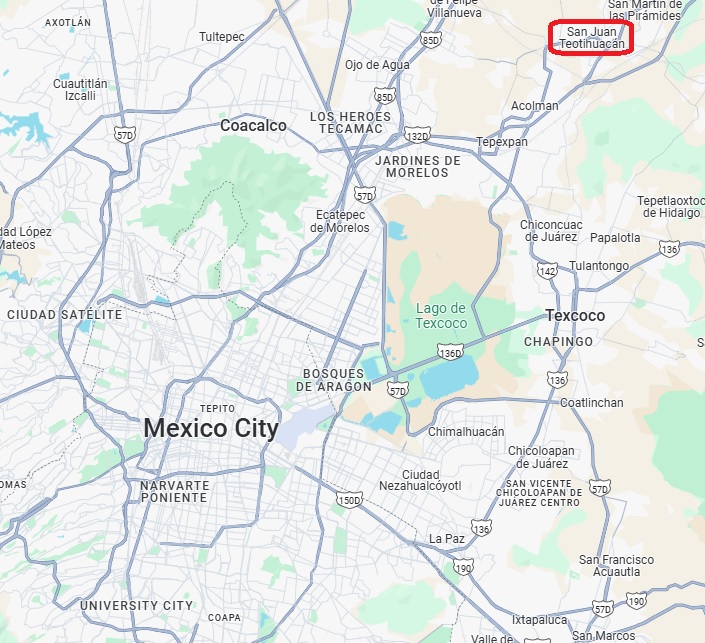
In the morning, Horacio picked us up and we drove to Teotihuacan (tay-oh-tee-wah-KAHN), about an hour's drive northeast of the city. Here's a map showing its location:

Teotihuacan is an archeological site best known for its pyramids (w). Terry and I visited the site when we went to Mexico in 2008 (you can read about that visit here). On that occasion, we saw two of the three major pyramids at the site; this time, we saw the third one - which I didn't even know existed until this trip.
The first thing we did when we got there was to pick up our friend Malena, whom we hadn't seen for several years:
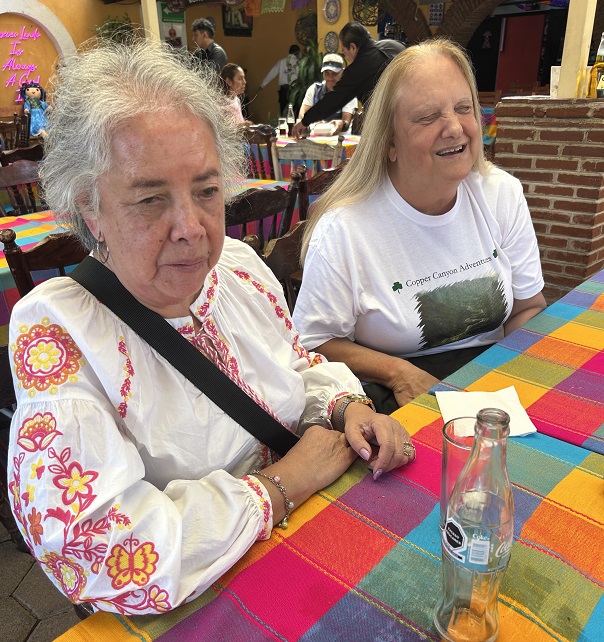
Malena and Terry sit together at a restaurant table.
...and then we drove to the site, and Terry and Malena stayed in the car talking and catching up, while Lucia and Esmond and I went off to see the pyramids.
As I said, there are three large pyramids at the site: the Pyramid of the Sun, the Pyramid of the Moon, and the Temple of Quetzalcoatl (ketz-el-co-AH-t'l), the Feathered Serpent. The Moon pyramid is at the northern end of the site, the Sun pyramid is in the middle, and the Quetzalcoatl temple is at the southern end. The last time we came, we started at the northern end, and only saw the Sun and Moon pyramids. This time we started at the southern end, and discovered the Temple.
Right outside the entrance to the site itself, there's a area with several shops and restaurants. There we met a woman named Gabby:
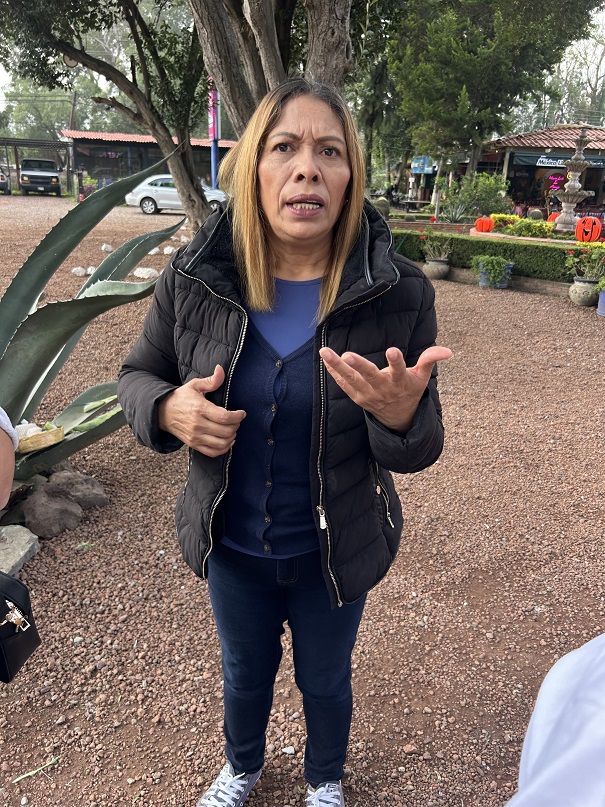
...who gave us an interesting talk about the agave plant:
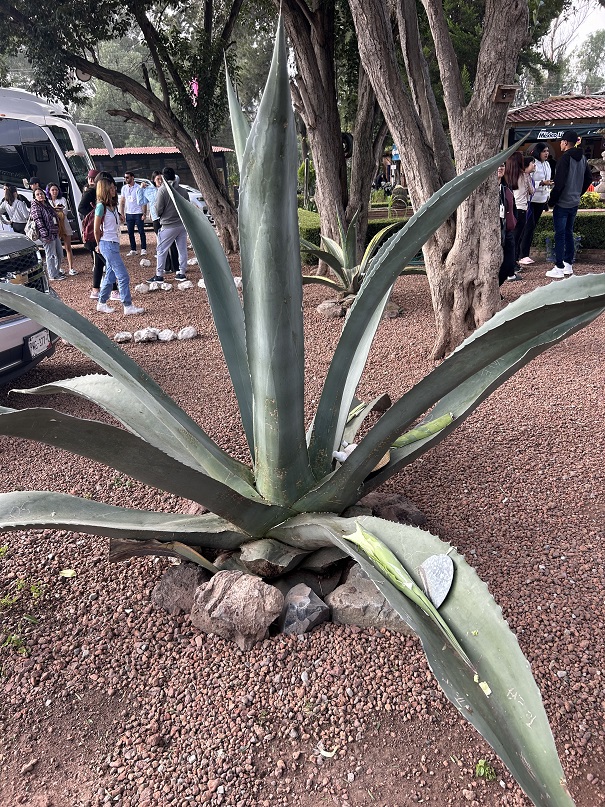
The plant has several long spiky leaves which taper to a sharp point
Agave, of course, is best known as the plant that tequila is made from. What's not as generally known is that the plant was used by the Aztecs in many other ways (w). For example, you can peel off layers from the leaves and dry them, and use them as paper:

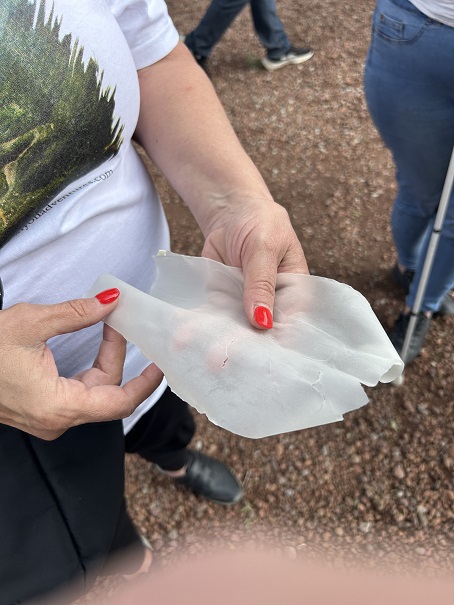
In the picture on the left, Gabby pulls a thin, translucent layer from an agave leaf. In the picture on the right, Terry holds a piece of the layer.
If you pull off the sharp point at the end of the leaf, it's followed by long, thin fibers, and you have a needle and thread:
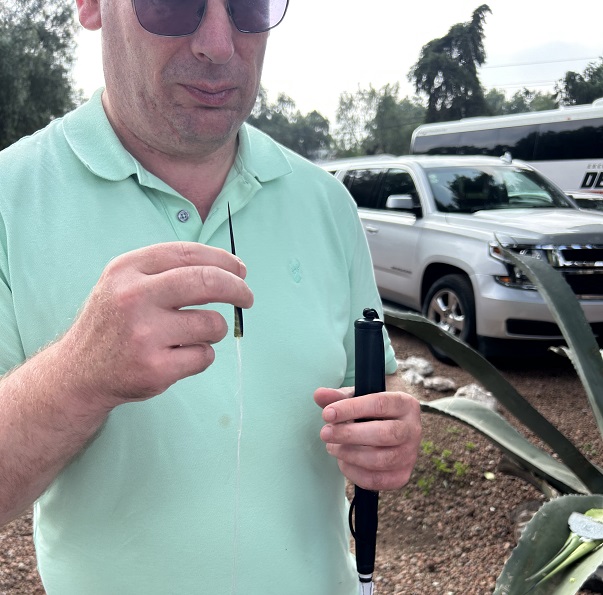
Esmond holds up the point, showing the fibers trailing from its other end.
Gabby also showed us this Mexican Hairless dog (whose name I've forgotten):
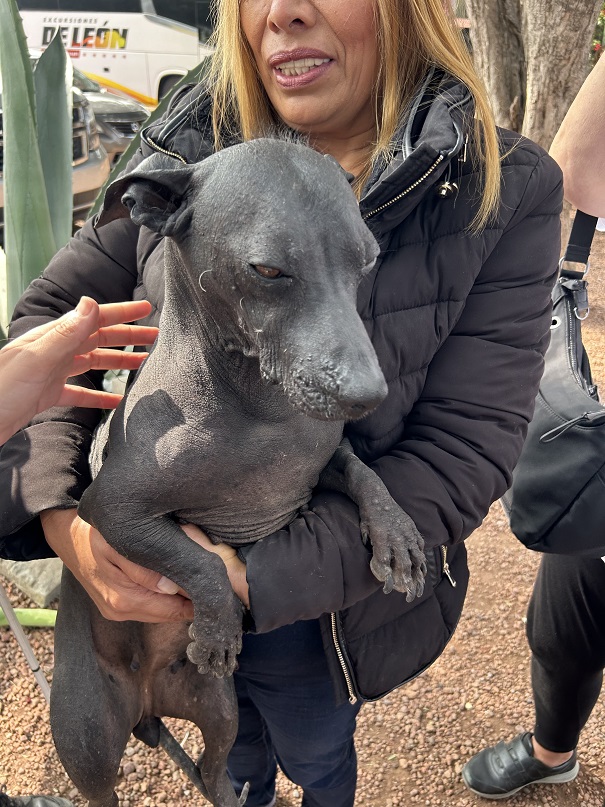
Gabby holds the dog in her arms. It's black, with no body hair except for a few whiskers around the muzzle.
...as well as these chunks of obsidian:
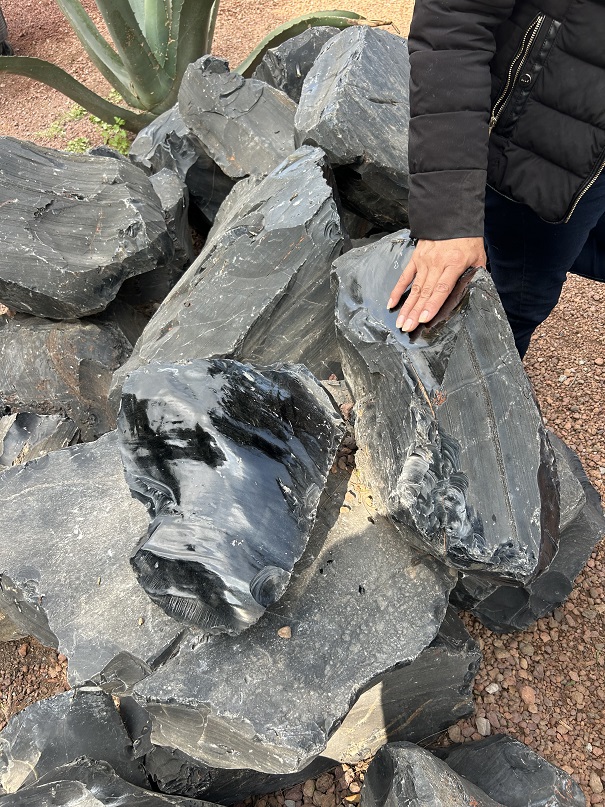
A pile of large chunks of black rock, one of which has a shiny surface.
...following which we spent some time exploring the shops, which actually had items of superior quality to the usual tourist schlock. Terry bought some obsidian jewelry and handmade soap.
The Temple of Quetzalcoatl (w) stands at the far end of a large courtyard bordered by stone walls:
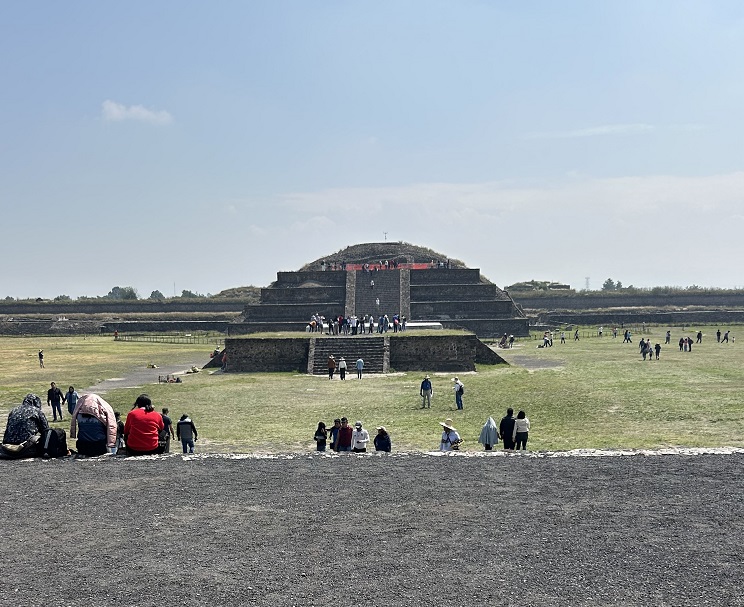
The courtyard is square, covered with grass, and larger than a football field in each direction. In the center is a stone platform, with about a dozen steps leading up to the top. Several people stand on top of the platform. At the far side of the square is what appears to be the pyramid, with four tiers, a long stairway up the middle, and a rounded top.
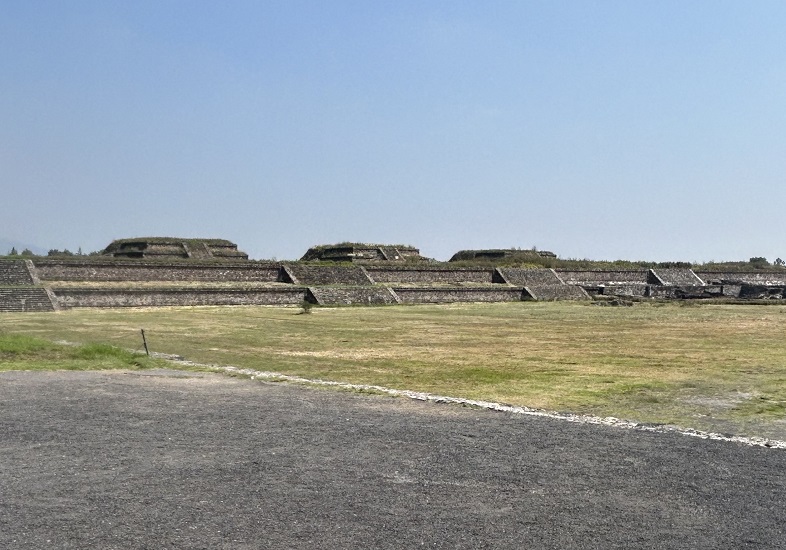
A view of one of the side walls shows several stone platforms on top of the wall.
The stone platform in the center of the courtyard (with all the people standing on it), as well as the similar platforms on the surrounding walls, originally had buildings (probably smaller temples) standing on them. But since those buildings were made of wood, they haven't survived.
Now, if you take a look at the picture of the courtyard, you'll see a structure with four tiers and a long flight of stairs, with a couple of people on the stairs, and a few more at the top. Here's a closeup:
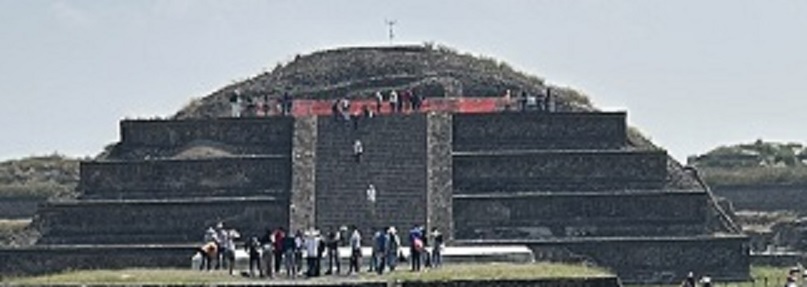
From a distance, that appears to be the temple, but it's not. It's actually another platform. The temple itself is behind that platform; you can see the rounded top of the temple peeking out above the top of the platform. After you climb up to the top of the platform, you get a look at the actual temple:
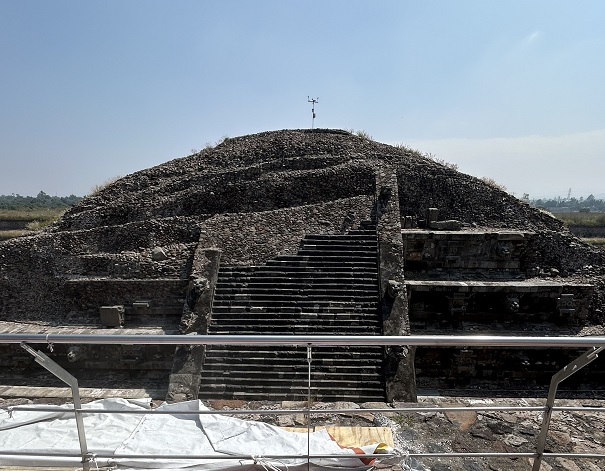
The temple also has several tiers, and a long stariway up the middle. Carved heads stick out at intervals along the two sides of the stairway. The upper part of the temple is damaged, and is just a rounded pile of rock. The view of the temple is partially blocked by a metal rail at the top of the platform, to prevent visitors from getting any closer.
Notice the heads sticking out along the side of the stairway. Here's a closeup:
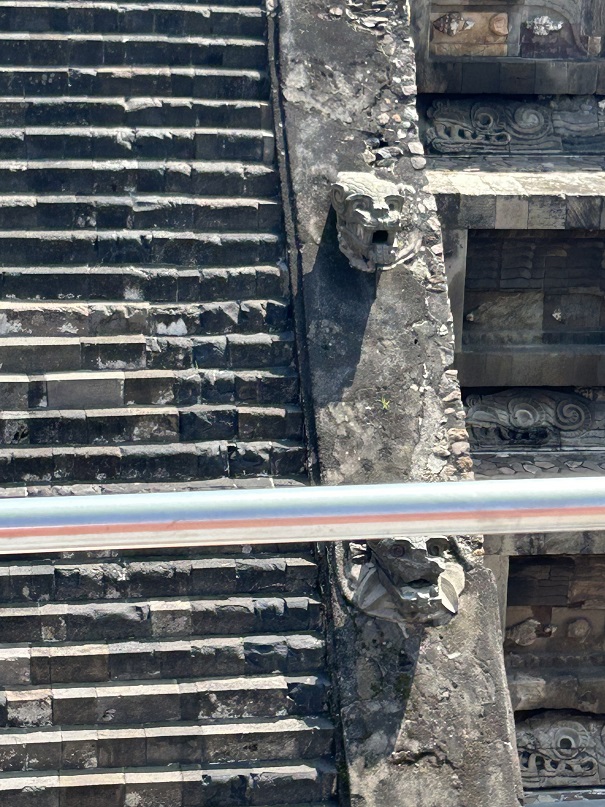
Two carved heads of what appear to be lions or some other large beast stick out from the side of the stairway. One of them is partially obscured by the metal rail.
I should have held the camera on the other side of that rail... Anyway, off the to side of the stairway are more carved heads, and bas-relief representations of Quetzalcoatl. I outlined one of them, to make it easier to see:
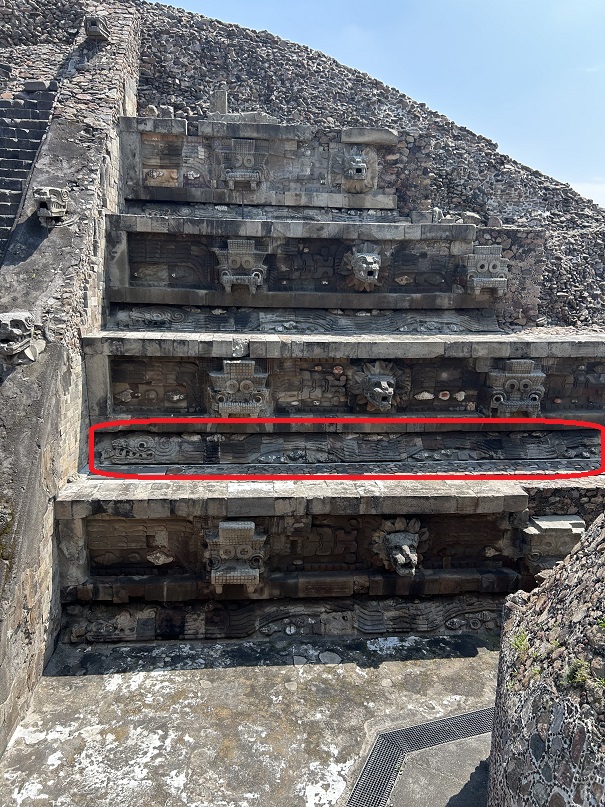
On each of the tiers, two or three carved heads stick out from the wall. Beneath the heads on one of the tiers, is an image of a long undulating serpent.
Here's another closeup:
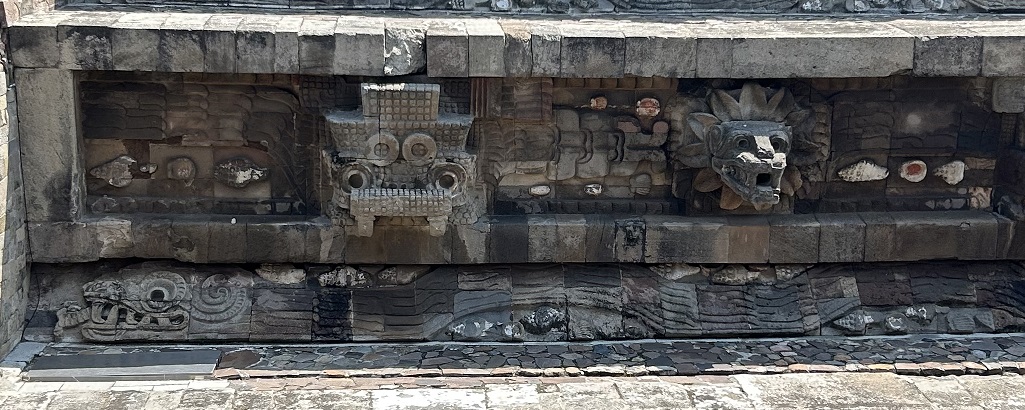
A closer view shows two of the carved heads and the serpent more clearly. The serpent has several sharp teeth and a forked tongue sticking out.
Quetzalcoatl (w) is one of the major Aztec gods, represented as a Feathered Serpent. I've always assumed that meant he was a serpent with feathers, but Horacio explained it differently. According to him, it's not that the serpent grew feathers, it's that he was adorned with feathers as a symbol of royalty.
As Horacio was telling us about Quetzalcoatl and the temple, he also mentioned in passing the Danza de los Voladores (w), or Dance of the Flyers. This is a ritual dance in which five men climb a 30 meter pole, secure themselves with ropes, wind the ropes around the pole, and then jump off and "fly" to the ground. This intrigued me, so I looked it up online, and found several videos, including this one. I'll have more to say about this later.
We left Teotihuacan and drove back to Mexico City, and went to the Plaza de la Constitución, or as it's commonly called, the Zócalo. This is a large open plaza in the middle of the city. To quote Wikipedia, "It has been a gathering place for Mexicans since Aztec times, having been the site of Mexican ceremonies, the swearing-in of viceroys, royal proclamations, military parades, Independence ceremonies, and modern religious events such as the festivals of Holy Week and Corpus Christi. It has received foreign heads of state and is the main venue for both national celebrations and national protests." Here's a good picture from the Wikipedia article:
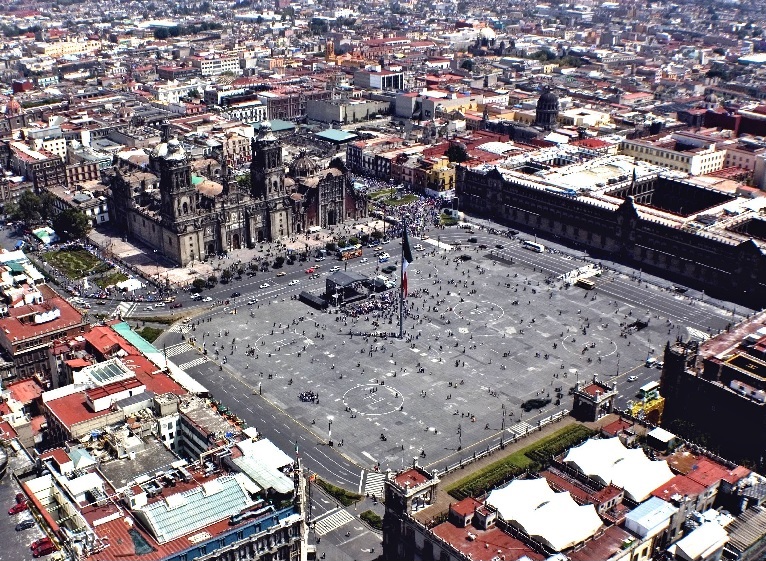
A large open square, with a Mexican flag on a tall flagpole in the center. On one side of the square is a large cathedral; on another side is a government building. The other two sides are lined with smaller buildings.
But on the day we were there, it looked totally different. There was some kind of book fair going on, and the plaza was covered with tents filled with booksellers vending their wares. And of course, there were street vendors and performers galore, including this group of musicians and dancers:
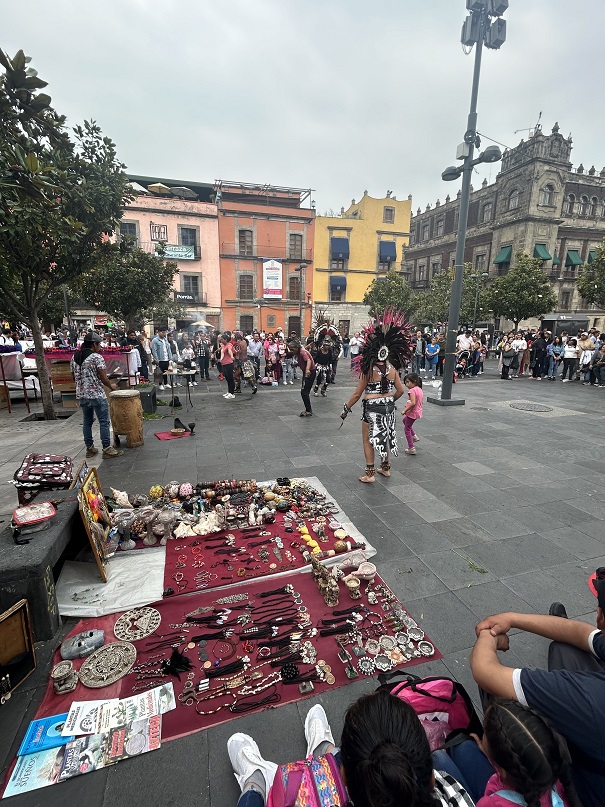
In the foreground, a jewelry vendor has spread out their wares on two large blankets on the ground. Beyond that are the musicians and dancers.
Two of the dancers in particular caught my eye:
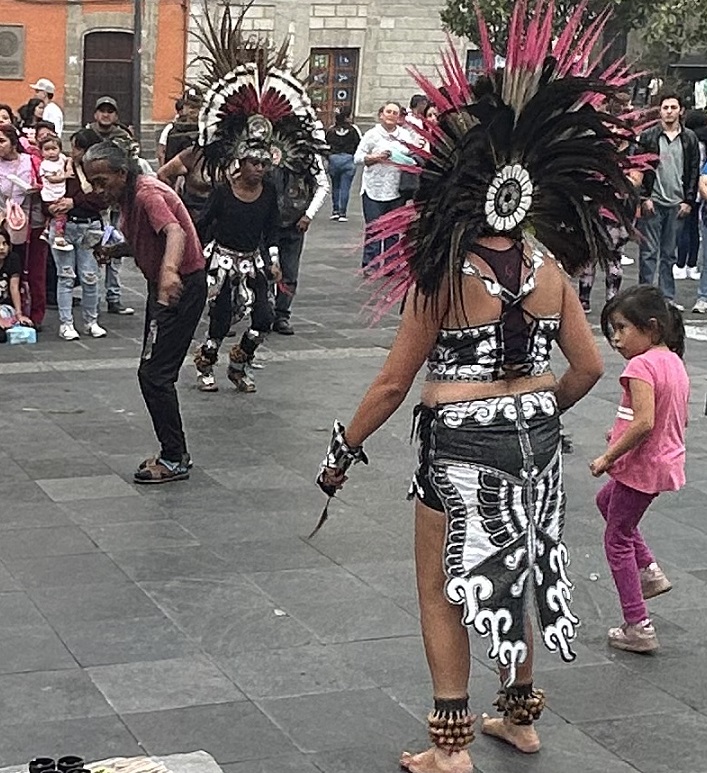
Two dancers, a man and a woman, wear elaborate black and white Aztec costumes with large feathered headdresses. A young girl in a pink shirt stands next to the woman. Also in the picture is a dark-skinned dancer in a red shirt and black pants.
I was amused how the little girl in the pink shirt was trying to keep up with the woman in the black and white outfit next to her (presumably her mother). But the one who really got my attention was the man in the red shirt. He was dancing with such energy and flair that I couldn't stop watching him. I tried to film him, but he stopped just a few seconds after I started, so this was all I got:
A short video clip of the dancers, only 5 seconds.
Horacio then led us to a place about a block away from the Plaza, where we saw these ruins:
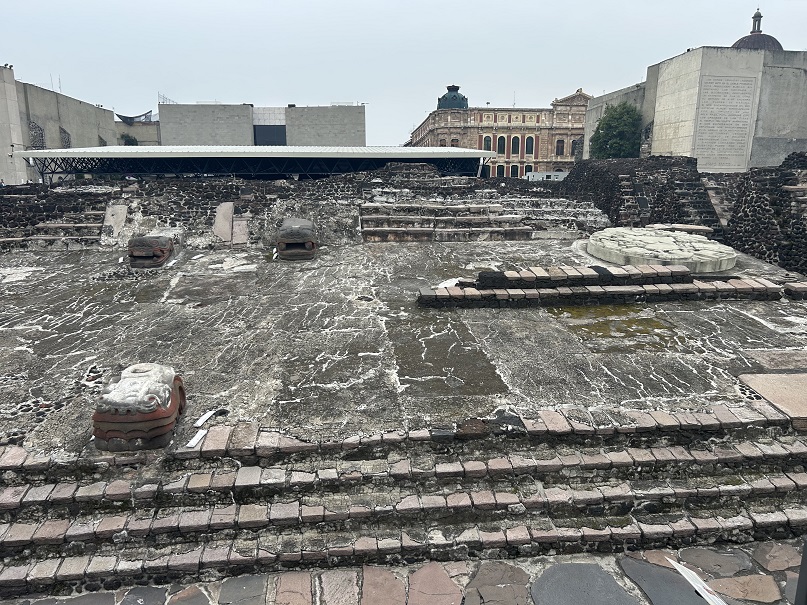
A large stone platform, with a few shallow steps leading up to it. At the top of the steps is a carved figure which might be another head, but it's hard to tell. In the background are more steps up, but nothing above them.
Present day Mexico City is built on the site of the Aztec city of Tenochtitlan (teh-NOCHE-tit-LAHN) (w). The Zócalo is on the site of Tenochtitlan's central plaza, and the ruins we were looking at are the remains of the Templo Mayor (my-OR) (w), the city's main temple complex.